 Efficacy of Open Textbook Adoption on Learning Performance and Course Withdrawal Rates: A Meta-Analysis
by
Virginia Clinton; Shafiq Khan
Efficacy of Open Textbook Adoption on Learning Performance and Course Withdrawal Rates: A Meta-Analysis
by
Virginia Clinton; Shafiq Khan
 Open educational resources and college textbook choices: A review of research on efficacy and perceptions
by
John Hilton III
Open educational resources and college textbook choices: A review of research on efficacy and perceptions
by
John Hilton III
 Opening the textbook: Educational resources in U.S. higher education, 2017
by
Julia E. Seaman and Jeff Seaman
Opening the textbook: Educational resources in U.S. higher education, 2017
by
Julia E. Seaman and Jeff Seaman
 Adoption and impact of OER in the global south
by
Edited by Cheryl Hodgkinson-Williams and Patricia B. Arinto
Adoption and impact of OER in the global south
by
Edited by Cheryl Hodgkinson-Williams and Patricia B. Arinto
 Covering the cost: Why we can no longer afford to ignore high textbook prices
by
Ethan Senack and Robert Donoghue
Covering the cost: Why we can no longer afford to ignore high textbook prices
by
Ethan Senack and Robert Donoghue
 2016 Student textbook and course materials survey: Results and findings
by
Florida Virtual Campus
2016 Student textbook and course materials survey: Results and findings
by
Florida Virtual Campus
 How Professors Help Rip Off Students: Textbooks are too expensive.
by
Tim Wu
How Professors Help Rip Off Students: Textbooks are too expensive.
by
Tim Wu
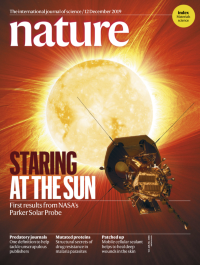 Predatory journals: no definition, no defence
by
Agnes Grudniewicz et al.
Predatory journals: no definition, no defence
by
Agnes Grudniewicz et al.
This list is presented in reverse chronological order. Subscription may be required in some cases.
The resources here were compiled by Stacy Katz and are available in list form.
 Bibliographic Instruction and the Need for “Librarian-First” OER Repositories
by
Michael Kirby
Bibliographic Instruction and the Need for “Librarian-First” OER Repositories
by
Michael Kirby
 Collaborative AI: OER Materials for Exploring AI as a Partner Rather than a Tool
by
David Smith
Collaborative AI: OER Materials for Exploring AI as a Partner Rather than a Tool
by
David Smith
 Impact of OER Material during COVID-19: Survey of Students Enrolled in City University of New York (CUNY) Kingsborough Community College
by
Dorina Tila
Impact of OER Material during COVID-19: Survey of Students Enrolled in City University of New York (CUNY) Kingsborough Community College
by
Dorina Tila
 Increasing the Open Education Resources Capacity of Precalculus Courses at York College and Queensborough Community College
by
Virginia Thompson and Patrick Wallach
Increasing the Open Education Resources Capacity of Precalculus Courses at York College and Queensborough Community College
by
Virginia Thompson and Patrick Wallach
 Open educational resources and student performance trajectories: B is achievable, A illusive
by
Ilir Disha and Brenda K. Vollman
Open educational resources and student performance trajectories: B is achievable, A illusive
by
Ilir Disha and Brenda K. Vollman
 Reviewing a 5-year grant-funded campus OER initiative: Reflections, successes, and challenges
by
Christina Boyle
Reviewing a 5-year grant-funded campus OER initiative: Reflections, successes, and challenges
by
Christina Boyle
 Open Educational Resources in History: A State-of-the-Field Essay
by
Katherine Tsan
Open Educational Resources in History: A State-of-the-Field Essay
by
Katherine Tsan
 Development of an Online General Biology Open Educational Resource (OER) Laboratory Manual
by
Dmitry Y. Brogun, Azure N. Faucette, Kristin Polizzotto, and Farshad Tamari
Development of an Online General Biology Open Educational Resource (OER) Laboratory Manual
by
Dmitry Y. Brogun, Azure N. Faucette, Kristin Polizzotto, and Farshad Tamari
 Large scale Open Educational Resources (OER) Initiative in Mathematics
by
Alioune Khoule, Abderrazak Belkharraz Idrissi, and Sandra Sze
Large scale Open Educational Resources (OER) Initiative in Mathematics
by
Alioune Khoule, Abderrazak Belkharraz Idrissi, and Sandra Sze
 Best practices in designing courses with Open Educational Resources
by
Zhadko, O., & Ko, S.
Best practices in designing courses with Open Educational Resources
by
Zhadko, O., & Ko, S.
 Developing open practices in teacher education: A model of integrating OER and renewable assignments
by
Van Allen, J. & Katz, S.
Developing open practices in teacher education: A model of integrating OER and renewable assignments
by
Van Allen, J. & Katz, S.
 So, you want to write an OER? Three authors share triumphs, pitfalls, and options
by
Offenholley, K., Hirsch, J.R., & Milman, Y.
So, you want to write an OER? Three authors share triumphs, pitfalls, and options
by
Offenholley, K., Hirsch, J.R., & Milman, Y.
 Teaching students to critically evaluate textbooks In The open organization guide for educators: Transformative teaching and learning for a rapidly changing world (pp. 110-117)
by
McHale, C., McDermott, I., & Ovadia, S
Teaching students to critically evaluate textbooks In The open organization guide for educators: Transformative teaching and learning for a rapidly changing world (pp. 110-117)
by
McHale, C., McDermott, I., & Ovadia, S
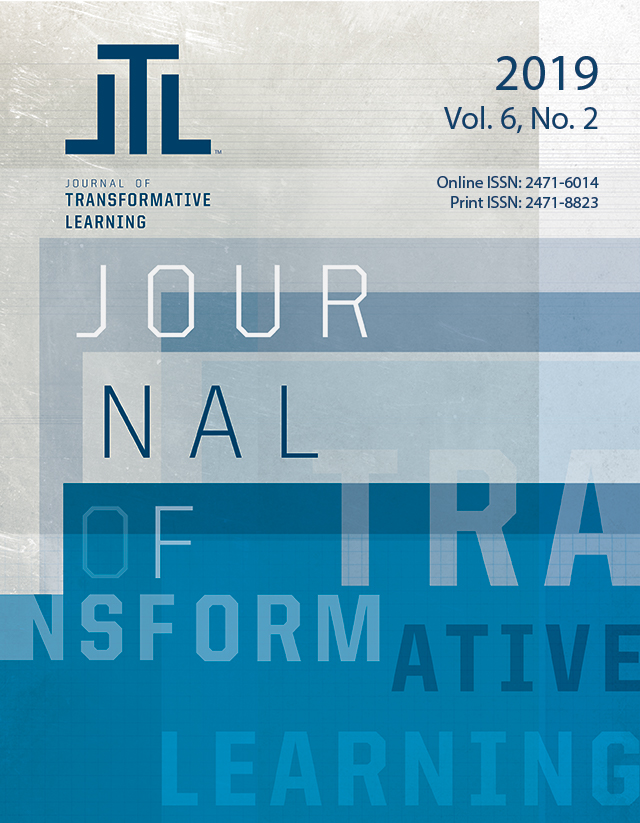 Applying transformative learning theory to open education
by
Katz, S
Applying transformative learning theory to open education
by
Katz, S
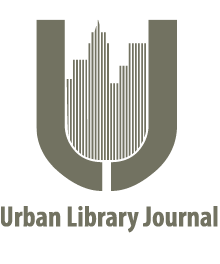 Remixing an Open Educational Resource: A case study of the uncommon “R”
by
Fazzino, L., & Turley, J.
Remixing an Open Educational Resource: A case study of the uncommon “R”
by
Fazzino, L., & Turley, J.
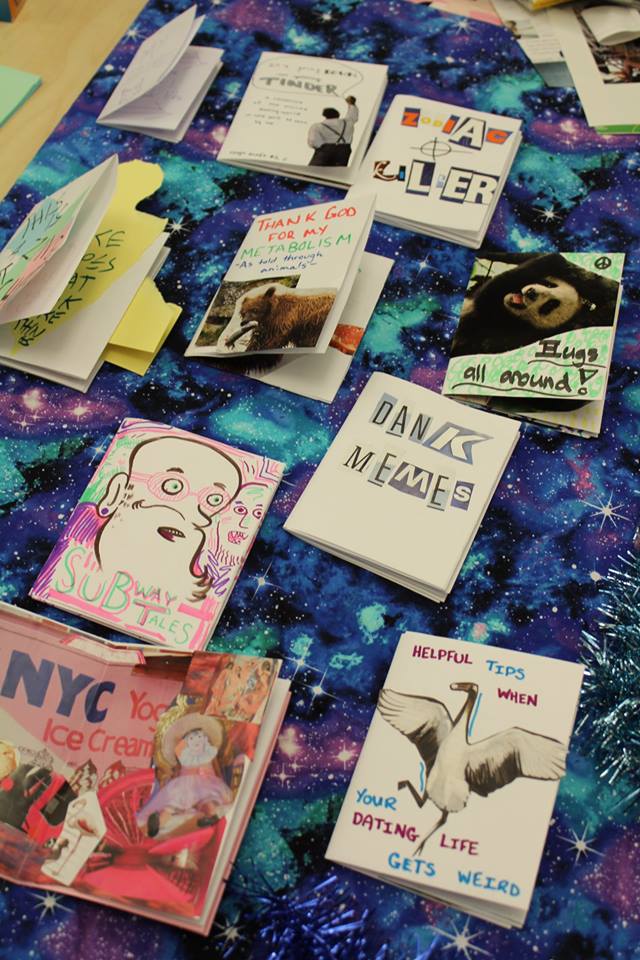 Zines as Open Pedagogy
by
Elvis Bakaitis
Zines as Open Pedagogy
by
Elvis Bakaitis
 Creating and implementing open educational resources for the Spanish as a Heritage Language classroom
by
Evelyn Durán Urrea; Jocelly G. Meiners
Creating and implementing open educational resources for the Spanish as a Heritage Language classroom
by
Evelyn Durán Urrea; Jocelly G. Meiners
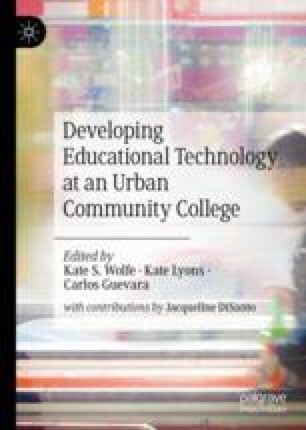 Expanding Access to Education Through Open Educational Resources (OERs)
by
Lisa Tappeiner; Jacqueline M. DiSanto;Kate Lyons
Expanding Access to Education Through Open Educational Resources (OERs)
by
Lisa Tappeiner; Jacqueline M. DiSanto;Kate Lyons
 Leveraging library expertise in support of institutional goals: A case study of an Open Educational Resources initiative
by
Stacy Katz
Leveraging library expertise in support of institutional goals: A case study of an Open Educational Resources initiative
by
Stacy Katz
 Addressing the Technical Challenges of Open Educational Resources
by
Steven Ovadia
Addressing the Technical Challenges of Open Educational Resources
by
Steven Ovadia
 Share and share alike: using Creative Commons licenses to create OER
by
Susan Imberman, Ann Fiddler
Share and share alike: using Creative Commons licenses to create OER
by
Susan Imberman, Ann Fiddler
 Open Educational Resources and Rhetorical Paradox in the Neoliberal Univers(ity)
by
Nora Almeida
Open Educational Resources and Rhetorical Paradox in the Neoliberal Univers(ity)
by
Nora Almeida
 Equality Archive: Open Educational Resources as Feminist Praxis
by
Shelly Eversley, Laurie Hurson
Equality Archive: Open Educational Resources as Feminist Praxis
by
Shelly Eversley, Laurie Hurson
 What Impacts do OER Have on Students? Students Share Their Experiences with a Health Psychology OER at New York City College of Technology
by
Cailean Cooney
What Impacts do OER Have on Students? Students Share Their Experiences with a Health Psychology OER at New York City College of Technology
by
Cailean Cooney
 The Brightly Illuminated Path: Facilitating an OER Program at Community College
by
Blick, William; Marcus, Sandra
The Brightly Illuminated Path: Facilitating an OER Program at Community College
by
Blick, William; Marcus, Sandra
 Growth of the open educational resource movement
by
Christine Mooney and Leslie L. Francis
Growth of the open educational resource movement
by
Christine Mooney and Leslie L. Francis
 Open Digital Pedagogy = Critical Pedagogy
by
Jody R. Rosen; Maura A. Smale
Open Digital Pedagogy = Critical Pedagogy
by
Jody R. Rosen; Maura A. Smale
 Making Higher Education More Affordable, One Course Reading at a Time: Academic Libraries as Key Advocates for Open Access Textbooks and Educational Resources
by
Karen Okamoto
Making Higher Education More Affordable, One Course Reading at a Time: Academic Libraries as Key Advocates for Open Access Textbooks and Educational Resources
by
Karen Okamoto
 Open-Access Electronic Textbooks: An Overview
by
Steven Ovadia
Open-Access Electronic Textbooks: An Overview
by
Steven Ovadia
 Leveraging the Dual Role of the OER Practitioner/Administrator: 'Making it Count' at an Individual and Institutional Level
by
Cailean Cooney
Leveraging the Dual Role of the OER Practitioner/Administrator: 'Making it Count' at an Individual and Institutional Level
by
Cailean Cooney
 Does OER Research-Based Learning Improve Performance: A Case Study from Students Enrolled in a Community College at City University of New York (CUNY)
by
Dorin Tila
Does OER Research-Based Learning Improve Performance: A Case Study from Students Enrolled in a Community College at City University of New York (CUNY)
by
Dorin Tila
 Art History, Open Educational Resources (OERs), and Social Justice-Oriented Pedagogy: Adaptations to Introductory World Art History Survey Courses
by
Sara Ishii
Art History, Open Educational Resources (OERs), and Social Justice-Oriented Pedagogy: Adaptations to Introductory World Art History Survey Courses
by
Sara Ishii
 Breaking Open: Defining a Student-Centered Pedagogy
by
Elvis Bakaitis and Shawn(ta) Smith-Cruz
Breaking Open: Defining a Student-Centered Pedagogy
by
Elvis Bakaitis and Shawn(ta) Smith-Cruz
 Wanting more from OER: Enacting a queer of color commitment to open
by
Karen Zaino
Wanting more from OER: Enacting a queer of color commitment to open
by
Karen Zaino
 Open with intention: situating equity pedagogy within open education to advance social justice
by
Stacy Katz and Jennifer Van Allen
Open with intention: situating equity pedagogy within open education to advance social justice
by
Stacy Katz and Jennifer Van Allen
 It’s (not) in the reading: American government textbooks’ limited representation of historically marginalized groups
by
Brandle, S.M
It’s (not) in the reading: American government textbooks’ limited representation of historically marginalized groups
by
Brandle, S.M
 Beyond saving money: Engaging multiple stakeholders is a key to OER success
by
DiSanto, J.M., Cummings-Clay, D., Mitchell, S. and Ford, M.
Beyond saving money: Engaging multiple stakeholders is a key to OER success
by
DiSanto, J.M., Cummings-Clay, D., Mitchell, S. and Ford, M.
 Developing mindful collection decision making: A case study on analyzing acquisition e-book projects using financial concepts
by
Falloon, K. A.
Developing mindful collection decision making: A case study on analyzing acquisition e-book projects using financial concepts
by
Falloon, K. A.
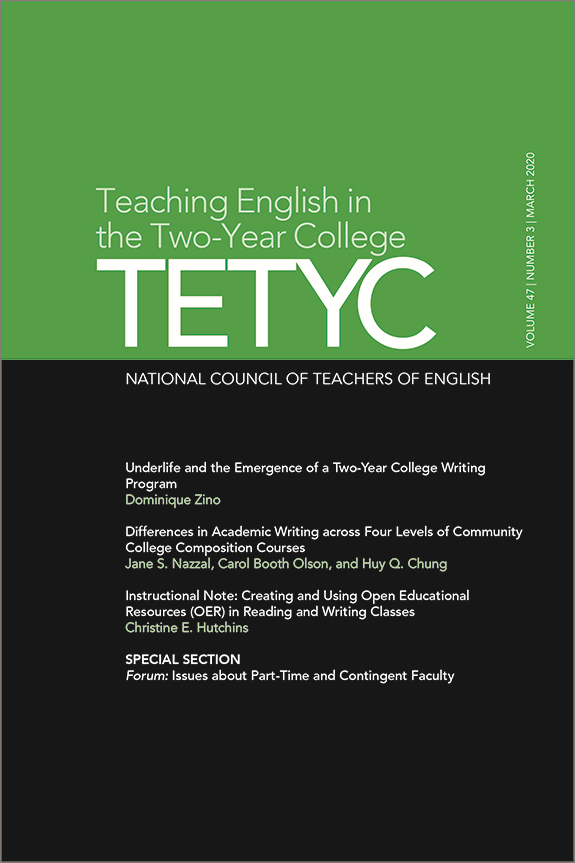 Creating and using Open Educational Resources (OER) in reading and writing classes
by
Hutchins, Christine, E
Creating and using Open Educational Resources (OER) in reading and writing classes
by
Hutchins, Christine, E
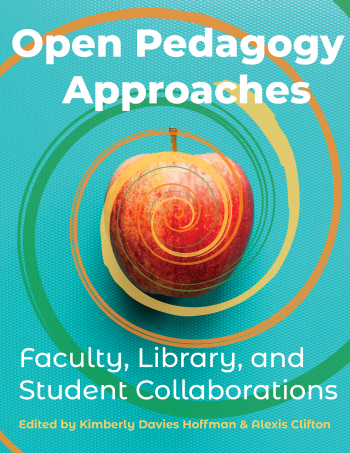 Evolving into the open: A framework for collaborative design of renewable assignments
by
Katz, S. & Van Allen, J. in A. Clifton & K.D. Hoffman, Open Pedagogy Approaches: Faculty, Library, and Student Collaborations
Evolving into the open: A framework for collaborative design of renewable assignments
by
Katz, S. & Van Allen, J. in A. Clifton & K.D. Hoffman, Open Pedagogy Approaches: Faculty, Library, and Student Collaborations
 It’s About Time: Open Educational Resources and the Arts
by
McDermott, I.
It’s About Time: Open Educational Resources and the Arts
by
McDermott, I.
 Open to what? A critical evaluation of OER efficacy studies
by
McDermott, I.
Open to what? A critical evaluation of OER efficacy studies
by
McDermott, I.
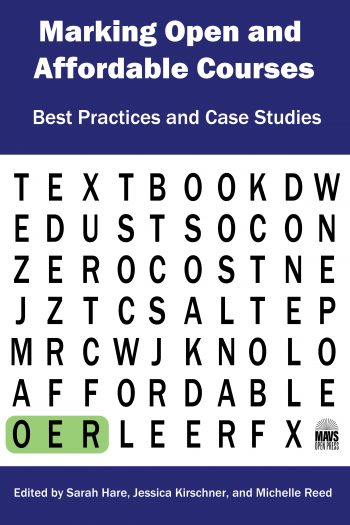 City University of New York
by
McKinney, A. & Fiddler, A.
City University of New York
by
McKinney, A. & Fiddler, A.
 Teaching with OER During Pandemics and Beyond
by
Van Allen, J. & Katz, S.
Teaching with OER During Pandemics and Beyond
by
Van Allen, J. & Katz, S.
 Emancipatory Learning, Open Educational Resources, Open Education, and Digital Critical Participatory Action Research
by
Jason M. Leggett; Jay Wen; Anthony Chatman
Emancipatory Learning, Open Educational Resources, Open Education, and Digital Critical Participatory Action Research
by
Jason M. Leggett; Jay Wen; Anthony Chatman
 Opening up to OERs: Electronic Original Sourcebook Versus Traditional Textbook in the Introduction to American Government Course
by
Shawna M. Brandle
Opening up to OERs: Electronic Original Sourcebook Versus Traditional Textbook in the Introduction to American Government Course
by
Shawna M. Brandle

LinkedIn Facebook Instagram